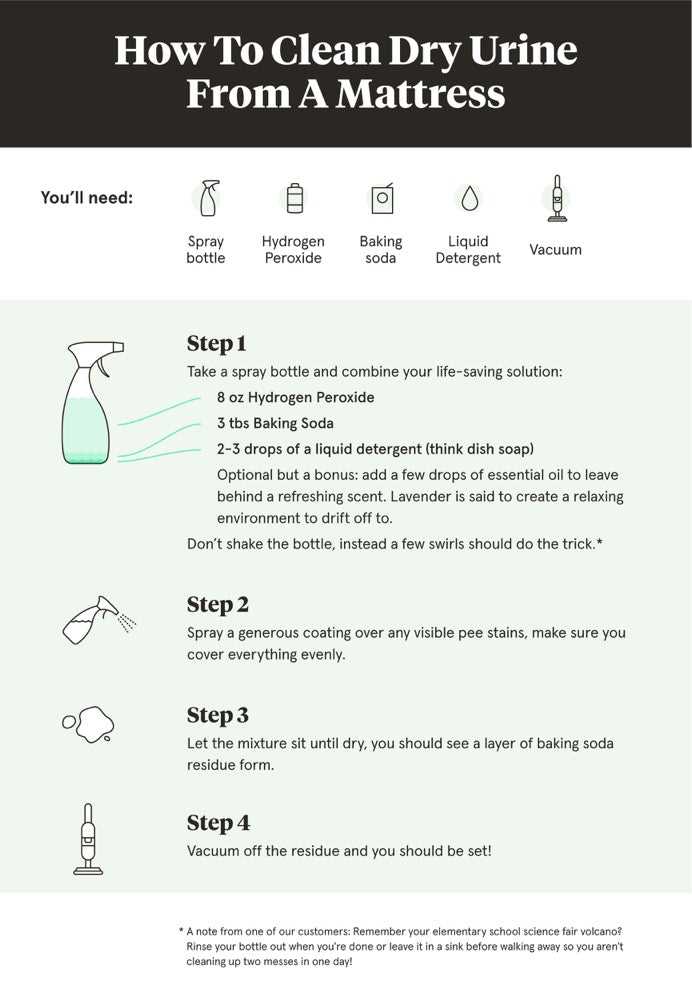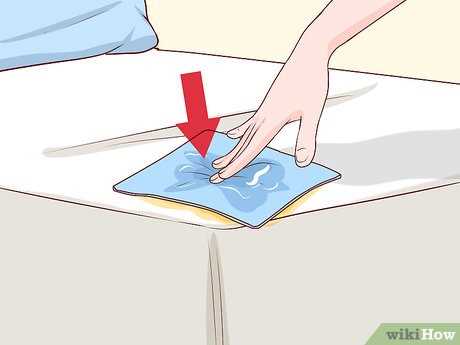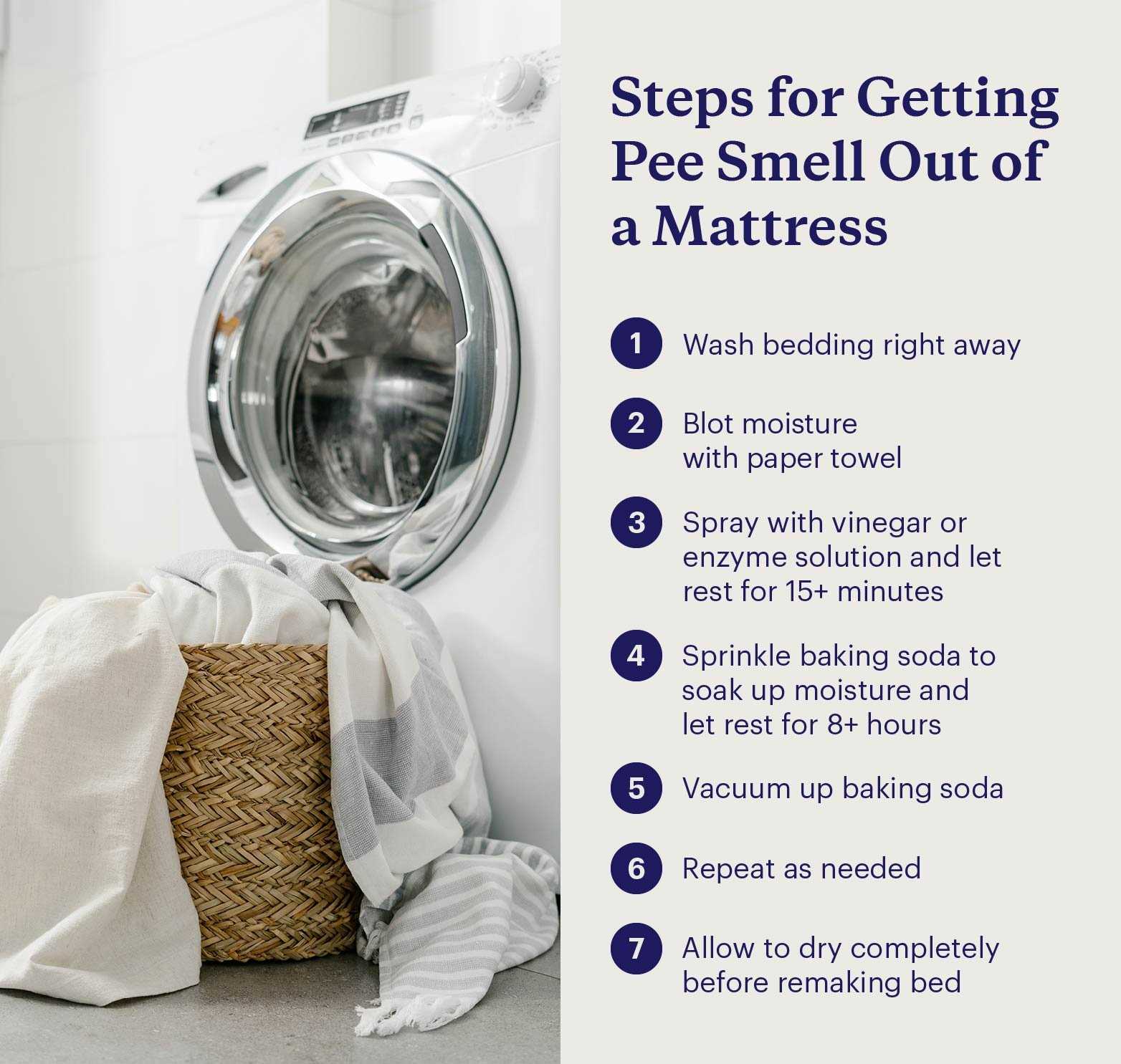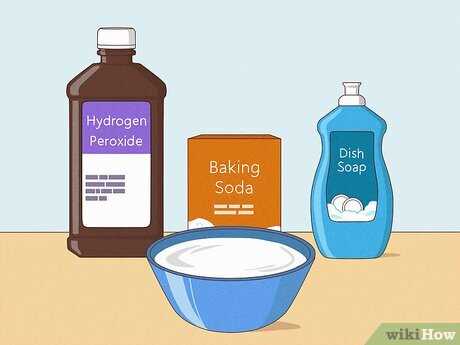



Start with a mixture of equal parts white vinegar and water. Spray this solution generously on the affected area. Allow it to soak for about 10-15 minutes, as this combination neutralizes the troublesome odors effectively.
Next, sprinkle a generous amount of baking soda over the damp area. This natural deodorizer will absorb any lingering scent. Leave it on for several hours or ideally overnight to maximize its potency.
Afterward, vacuum the area thoroughly to remove the baking soda. For an additional boost, consider using an enzymatic cleaner specifically designed to break down organic matter. Follow the product instructions carefully to ensure the best results.
Finally, to maintain a fresh environment, ensure proper ventilation in the room. Open windows or use a fan to circulate air, which will help eliminate any remaining odors and keep your sleeping area pleasant.
Assessing the Damage: Identifying Affected Areas

First, locate the spots where my accidents happened. Use a blacklight in a dark room to reveal any hidden marks. This tool works great for spotting issues that might not be visible to the naked eye.
Next, check the mattress layers. Sometimes, the liquid seeps deep, affecting more than just the surface. Examine both sides and any seams or edges where the moisture could have penetrated.
| Area | Assessment Method |
|---|---|
| Surface | Visual inspection |
| Seams | Finger test for dampness |
| Bottom | Check for discoloration |
| Inner Layers | Blacklight test |
Once identified, address the areas promptly. Consider using products like Simple Green Cleaner for effective cleaning without harsh chemicals.
Finally, if the odor persists, you might need to replace the mattress. It’s better to invest in a new one than to live with lingering scents.
Choosing the Right Cleaning Solution for Urine

Opt for enzymatic cleaners specifically designed to break down organic waste. These formulas contain enzymes that effectively neutralize odors and stains, making them ideal for problematic areas. Look for products labeled as safe for fabrics.
Vinegar and baking soda can be a powerful duo. Mix equal parts of water and white vinegar, spray on the affected area, then sprinkle baking soda. This combination helps absorb lingering scents and provides a natural alternative.
Hydrogen peroxide is another option, especially for stubborn stains. A mix of 3% hydrogen peroxide with a drop of dish soap can work wonders. Test on a small area first to ensure no discoloration occurs.
Some commercial products contain essential oils for a pleasant scent. However, ensure they are pet-safe, as some oils can be harmful to us furry friends. Always check labels before use.
For immediate action, paper towels can help soak up excess liquid. Blot the area gently, avoiding rubbing, which can spread the issue. After blotting, apply your chosen cleaner and follow up with thorough rinsing.
Always follow the manufacturer’s instructions on any product, ensuring optimal results without damaging your sleeping surface. Regular maintenance with the right solution can prevent future mishaps and keep your space fresh.
Step-by-Step Cleaning Process for Your Mattress

Start with removing all bedding and linens. This allows full access to the surface needing attention.
Blot the affected area with a clean, dry cloth to absorb any excess moisture. Avoid rubbing, as this can push the liquid deeper.
Mix equal parts white vinegar and water in a spray bottle. Generously spray the mixture onto the stained area, ensuring it soaks through the fabric.
Let the solution sit for 10-15 minutes. This duration allows the vinegar to neutralize the unpleasant odor and begins breaking down residues.
After the wait, blot the area again with a clean cloth to remove the vinegar solution. Repeat this process until the area feels damp but not soaked.
Applying Baking Soda
Sprinkle a generous amount of baking soda over the treated area. This will absorb any lingering odors and moisture.
Leave the baking soda on for several hours, ideally overnight, to maximize its effectiveness.
Vacuum the baking soda thoroughly. Ensure no residue remains to avoid any gritty feel.
Final Touches
If necessary, repeat the cleaning process for stubborn spots. Maintain airflow in the room by opening windows or using a fan; this will help the mattress dry completely.
Once dry, consider using a mattress protector to prevent future incidents. This adds a layer of defense against unexpected accidents.
Drying Techniques to Eliminate Odor
Immediately address any dampness by using absorbent materials like towels. Blot the affected area gently, avoiding rubbing, which can spread moisture further into the fibers.
After blotting, consider using a fan to circulate air around the mattress. Position it to directly blow air onto the damp area, which accelerates evaporation. This is particularly effective in well-ventilated spaces.
For persistent moisture, a dehumidifier can be beneficial. Set it in the room to reduce humidity levels. Lower humidity not only helps dry the mattress faster but also diminishes lingering odors.
Sunlight is another natural solution. If possible, place the mattress outdoors on a sunny day. Direct sunlight helps kill bacteria and neutralizes odors, while the heat aids in drying.
Lastly, consider using a mixture of baking soda and essential oils. Sprinkle this mixture over the damp area after it has dried. Baking soda absorbs odors, while essential oils add a pleasant fragrance. Leave it for several hours before vacuuming it off, ensuring any remaining scent is eliminated.
Keep your environment fresh by ensuring your water source is clean and appealing. Check out the best water feeder for cats to promote hydration and good health.
Preventing Future Accidents: Tips for Cat Owners

Regular litter box maintenance is crucial. Scoop daily and change the litter weekly to ensure a clean environment.
Consider the placement of the litter box. It should be in a quiet, easily accessible location. Avoid putting it near food or water bowls.
Behavioral Observations
- Watch for signs of stress or anxiety in your feline. Changes in behavior may indicate discomfort.
- Provide plenty of enrichment activities. Toys, scratching posts, and playtime help reduce stress.
Health Check-ups
- Schedule regular veterinary visits. Health issues like urinary tract infections can lead to accidents.
- Monitor water intake. Ensure fresh water is always available to maintain hydration.
Consider multiple litter boxes if you have several pets. A good rule is one box per cat, plus one extra.
Introduce new changes gradually. Cats are creatures of habit, and sudden changes might provoke anxiety.
Reward good behavior. Positive reinforcement helps reinforce desired actions, fostering a better relationship.









